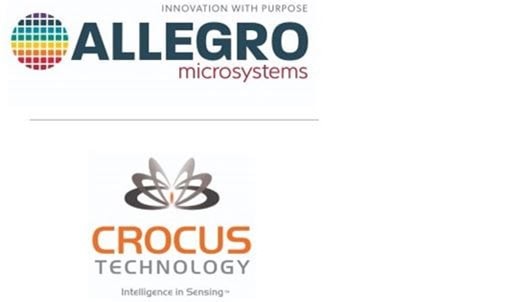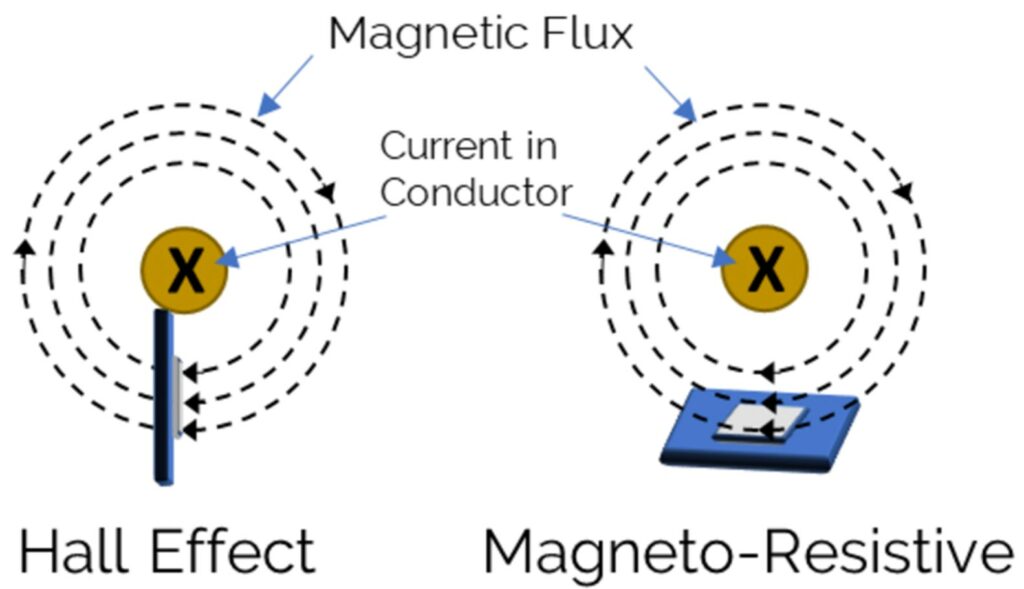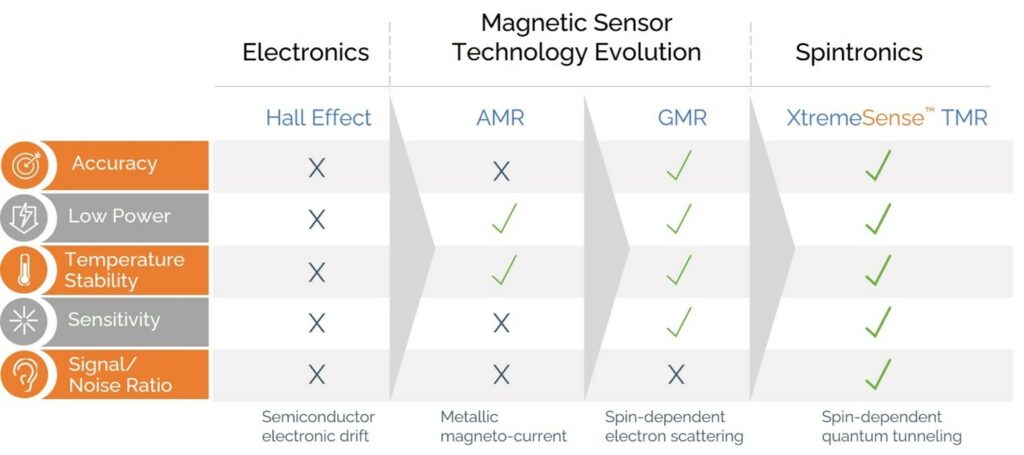
Already a force in filling the fast-growing demand for tunnel magnetoresistance sensing, Allegro Microsystems is paying up to command more of the market by purchasing Crocus Technology, a pioneering specialist in TMR sensors. Allegro is planning to purchase Crocus for $420 million in cash. The transaction is expected to close by year-end.
The deal will bring unique technology and products for high-growth applications in e-mobility, clean energy and automation, supported by more than 200 patents, says Allegro. The magnetic sensing market is expected to increase to over $5 billion by 2030, with TMR representing the fastest growing segment and expected to approach $1 billion by 2030. Automotive and industrial applications are expected to fuel TMR’s estimated 30% growth rate, which significantly exceeds the growth of the overall magnetic sensing market.

“Allegro has invested in TMR technology for the past decade, providing our customers with innovative and high-performing solutions enabling them to design products with optimal performance. We are seeing broader application of TMR technology as the megatrends of electrification and automation accelerate. This highly complementary acquisition aligns perfectly with Allegro’s growth initiatives and our focus on e-Mobility, clean energy and automation,” said Vineet Nargolwala, president and CEO of Allegro. “In addition to accelerating our TMR roadmap and further strengthening our leadership in magnetic sensors, the acquisition will allow us to offer a broader and more differentiated product offering to benefit our customers. We also welcome the deep expertise and technical talent that Crocus will add to the Allegro team.”

“The Crocus team is excited to join Allegro and unite complementary expertise to create superior, highly differentiated customer solutions,” said Zack Deiri, president and CEO of Crocus. “By combining Crocus’ best-in-class advanced TMR technology with Allegro’s long-standing partnerships with leading automotive and industrial OEMs and Tier-1’s, together, we expect to accelerate adoption of TMR in targeted automotive and industrial markets.”
Crocus develops XtremeSense TMR advanced sensor technology which provides the highest sensitivity, lowest power consumption and smallest size by comparison to other magnetic technologies such as Hall, AMR and GMR. It enables high magnetic sensitivity, stable performance over temperature, low noise and low power consumption which allows it to be used in a broad spectrum of applications. TMR sensors can replace many Hall Effect sensors with increased performance and cost savings.

TMR is based on different physics phenomena. The magneto-resistance effect is the property of a device to change its electrical resistance value under the influence of an external magnetic field, therefore allowing enhanced electrical detection of magnetic fields in various applications as magnetic sensing evolves in migrating from electronics to spintronics.

Tunnel magnetoresistance employs highly accurate spintronics, as opposed to Hall Effect’s legacy electrical. While spintronics exploits electrons’ charge states like traditional electronics, it also makes use of electrons’ spin states. The result is significantly increased performance and efficiency. Spintronics is seen as replacing electronic devices in many applications due to this greater performance at far lower power levels.
Crocus gives this summary of XtremeSense. At its heart is a thin-film magnetoresistive device, the magnetic tunnel Junction (MTJ). In its simplest form the MTJ consists of two electric-conducting magnetic layers on either side of a nanoscale-thin but robust insulating layer. One magnetic layer has a fixed magnetic moment direction, while the other can change freely to follow the direction of the local magnetic field.
According to classic physics, despite how thin the insulating layer is, it should prevent any current flow between the two magnetic layers. However, in this nano-world, quantum physics allows electrons to “tunnel” across the atoms of the thin insulating material with a resistance that depends on the sensitivity of the relative orientation of the two magnetic layers. Therefore, as the free layer magnetization follows the direction and intensity of the ambient magnetic field, its magnetic orientation is modified with respect to the reference layer. This change in relative magnetic orientation significantly changes the probability of quantum tunneling between the two layers and therefore the electron flow through the device.
For more info, see www.allegromicro.com and www.crocus-technology.com.



